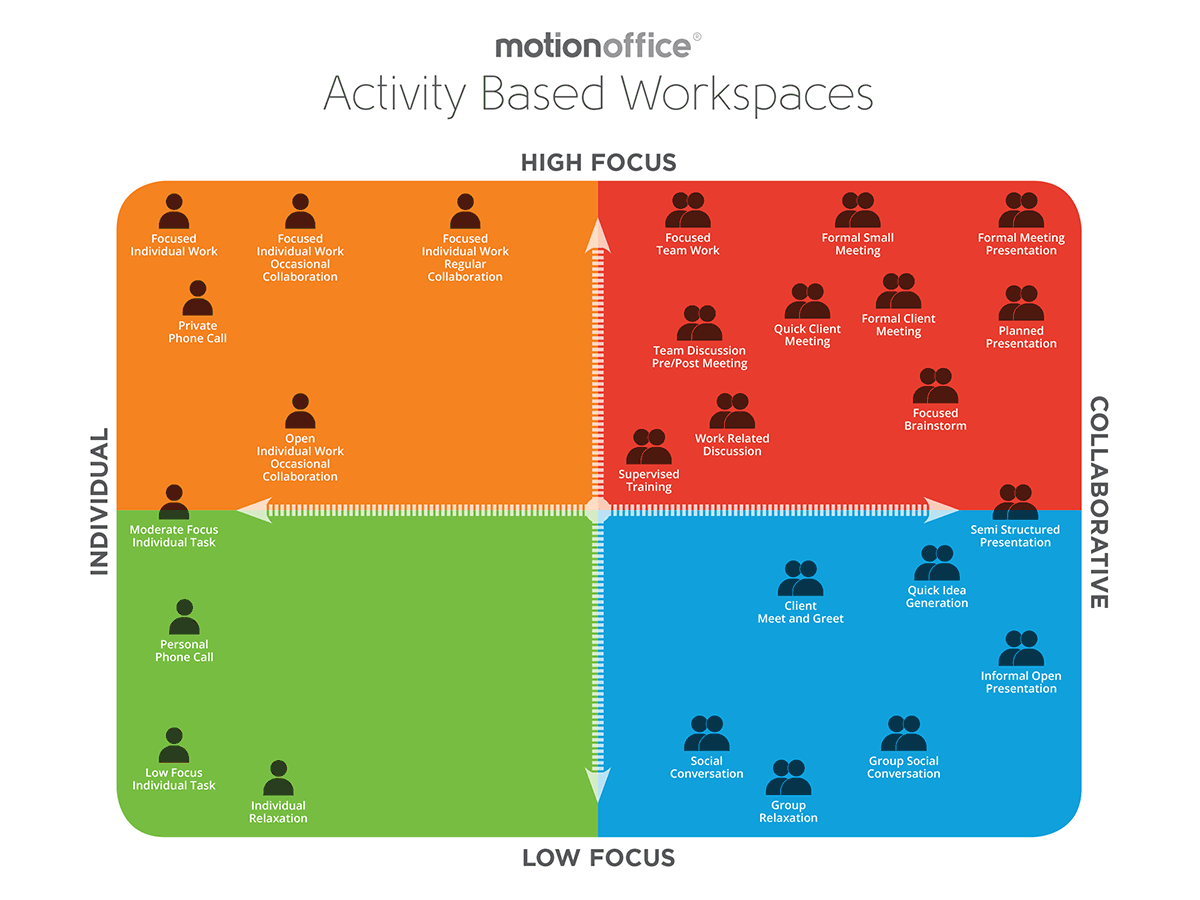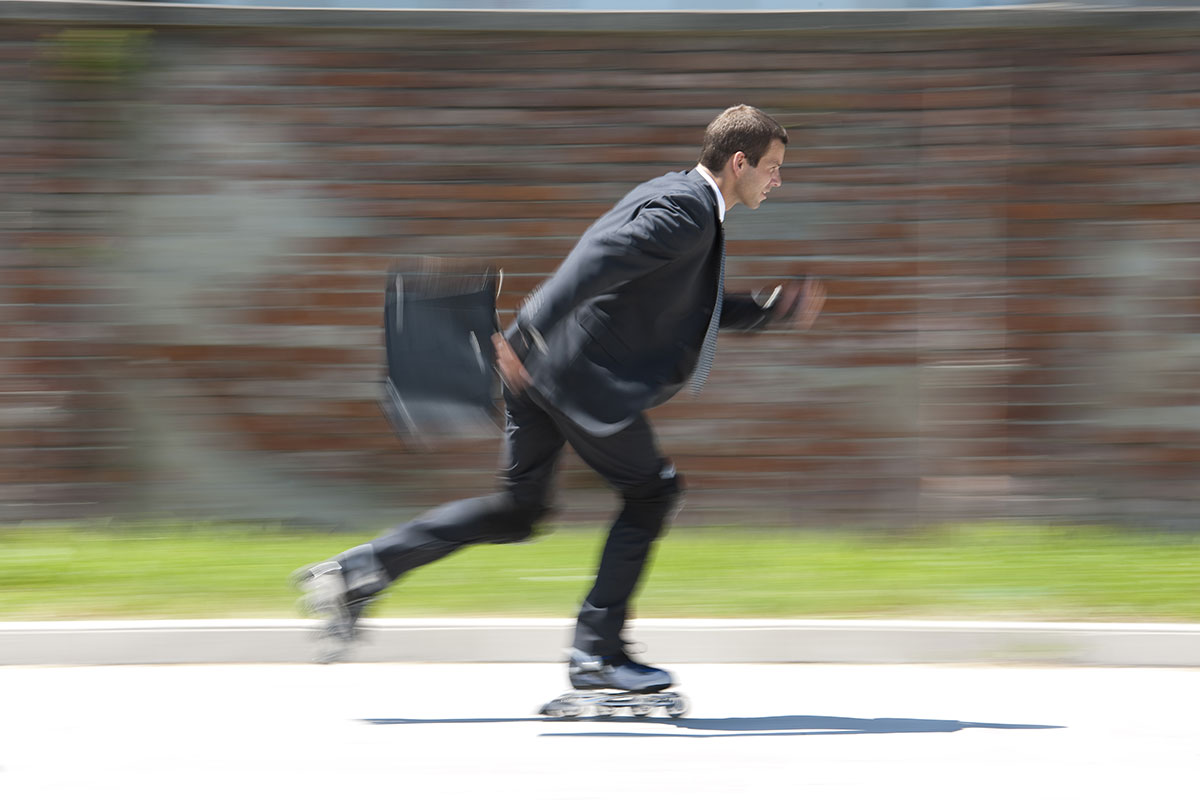Spent another week squeezing new hires into offices already bulging at the seams?
Not sure how you are going to reduce the facilities operating costs, with rents on the rise and the current recruitment drive still going strong?
It’s time to rethink the way your office works.
Look around, is your space well utilised? There may be little “available space” but it’s likely the desk utilisation is below 50% as people spend more time away from their desk - in meetings, on the road, or on leave. That’s a lot of wasted space, and wasted money.
The desk has been at the heart of office design thinking for decades - whether in cubicles or open plan - it was thought that every employee needed a fixed desk, a permanent base from which to work.
With the rise of mobile technology enabling people to work anytime, anywhere, the traditional desk simply takes up more space and undermines people from effectively performing their jobs.
Activity based working (ABW) takes a different approach, focusing on the different activities or tasks people perform everyday, and creating work settings to support those activities.
While the mix of activities people perform at every organisation is unique, there is a universal need for focused, high concentration work, collaborative and creative work, social and breakout spaces, and personal spaces, to take private phone calls or to take a time out.
With work settings especially designed for each activity, employees can choose the desk, room or area that enhances their ability to complete their tasks.
By not assigned people a fixed desk, they can actually be more productive. Activity based working empowers people to decide what space best suits the way they work and what they need to be effective, increasing individual and team productivity.
Unlike hot desking, where people time share a fixed desk, there are three components to creating an activity based workplace - technology, space and behaviours.
Once you have assessed the mix of activities your people regularly undertake, you can determine what technology, work settings and behaviours your organisation needs.
Firstly, what technology do you require?
Technology will be a combination of wireless network, smartphones, notebooks and desktop PCs, iPads, headsets and displays that enable people to be highly mobile, to work anywhere, anytime.

What work settings do you need?
The building layout and furniture will be a mix of high focus and low focus settings, as well a individual and collaborative settings.
Finally, what behaviours do people need to display?
The way people work is changing, organisations need people to be more agile, creative and collaborative, behaviours undermined by traditional office settings.
Activity based working removes rigid work practices, giving employees a choice in how, when and where they work. It removes unnecessary rules and procedures, instead promoting better communication, knowledge-sharing, collaboration and personal accountability.
Today, people are a company’s greatest resource, and the way they work directly contributes to delivering the bottom line and long term strategy. Activity based working ensures that resource is being utilised as efficiently as possible.
There was a time when work space was all about climate, cubicles and an appealing design. Now space is strategic: how does your layout and furniture currently contribute to your business’ strategy?
It’s unlikely it’s working as hard as it could be.
Thankfully, the hallmarks of activity based working are saving space, reducing cost, and increasing productivity, collaboration and entrepreneurship. A win/win for your business.
Ask yourself, is your organisation’s environment helping employees work as effectively and efficiently as your business needs?
Ask MotionOffice today about what activity based working could mean for your business.





